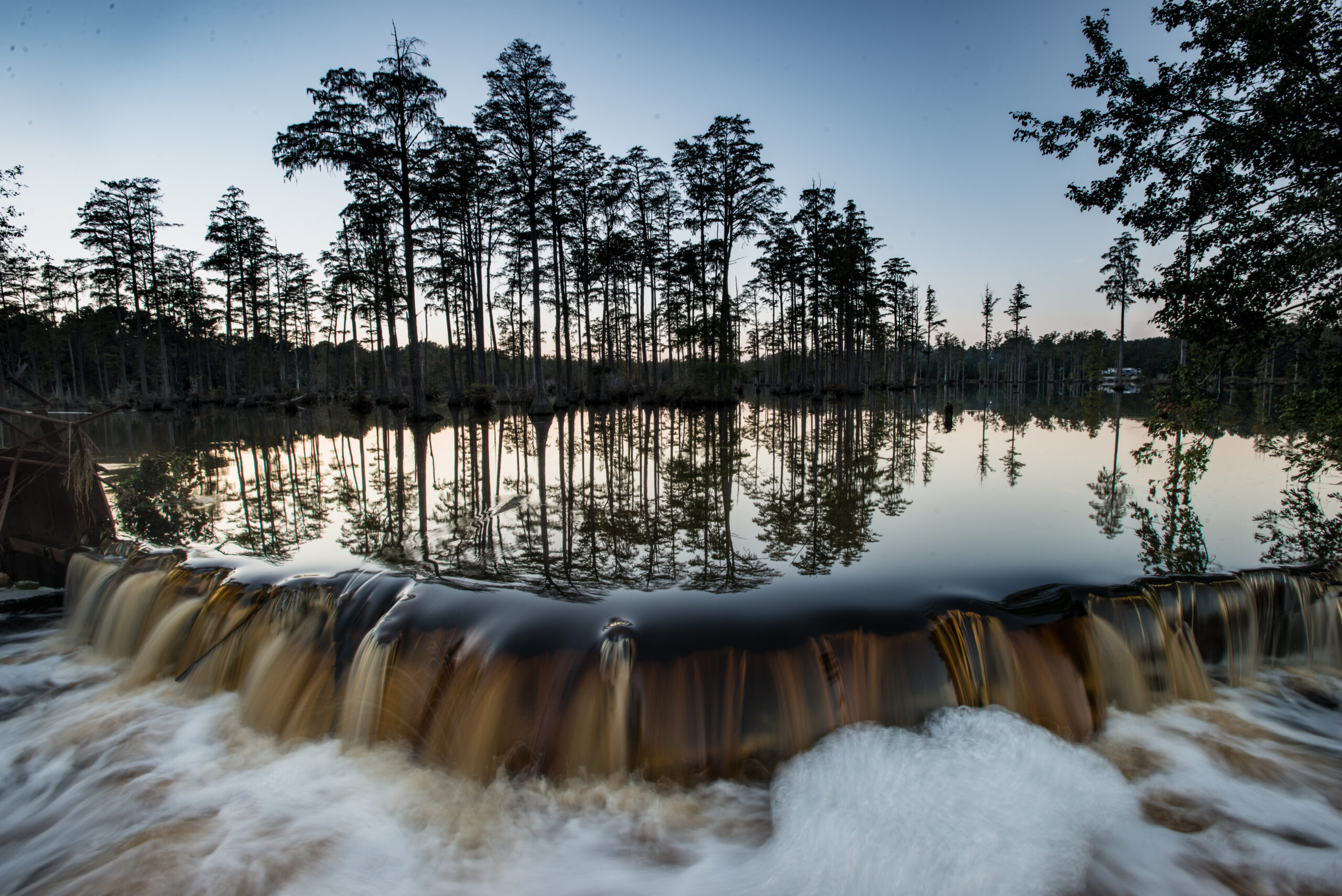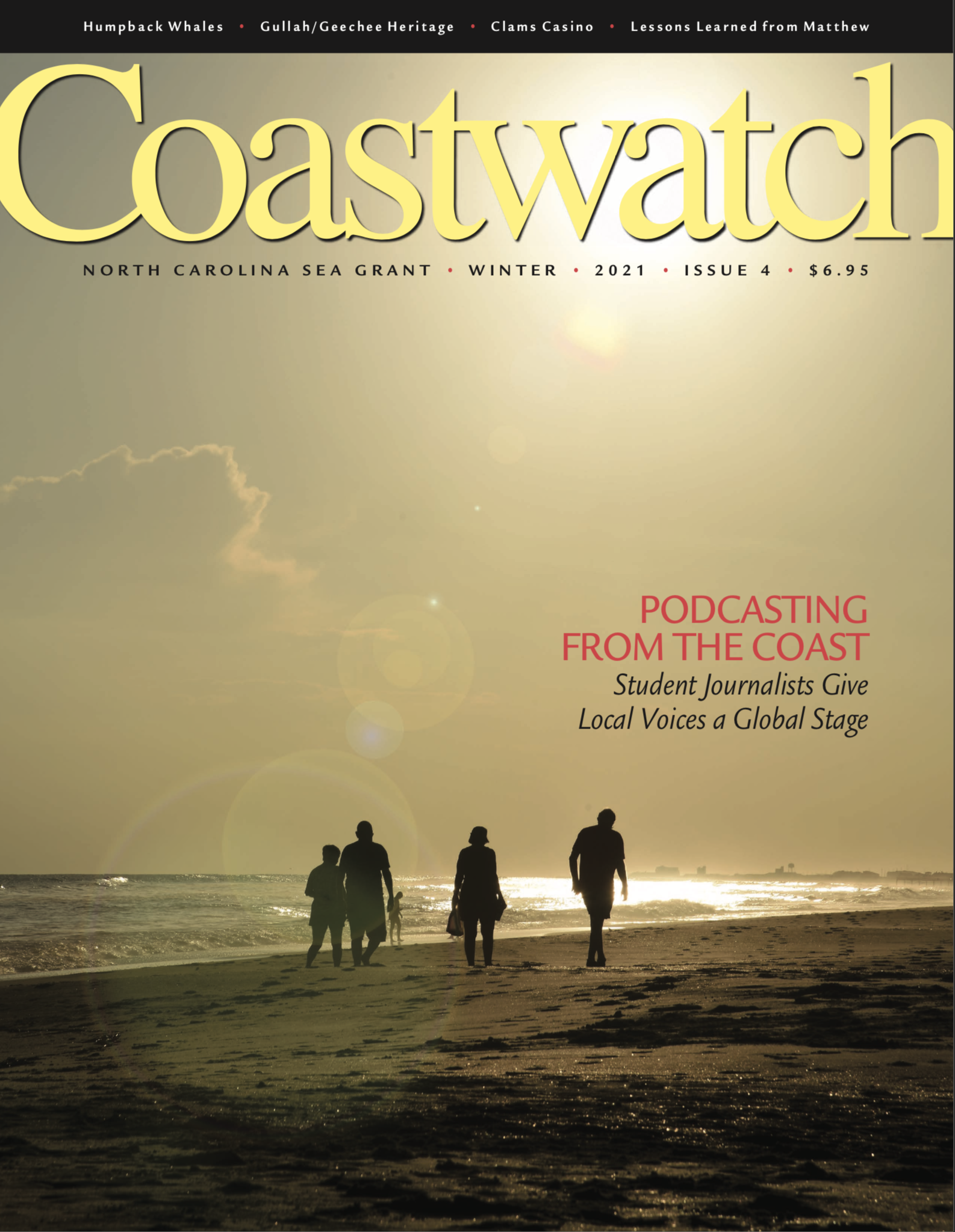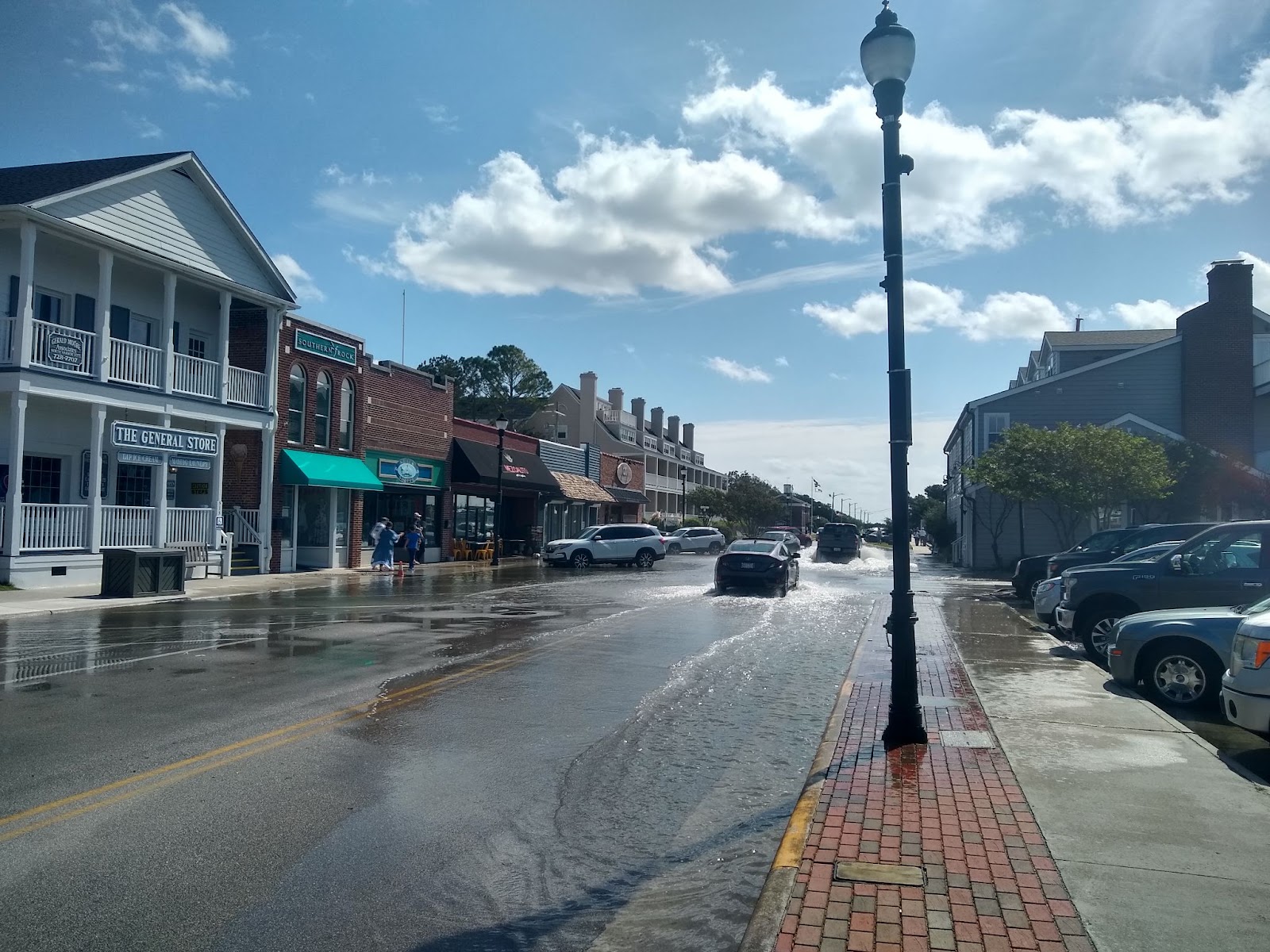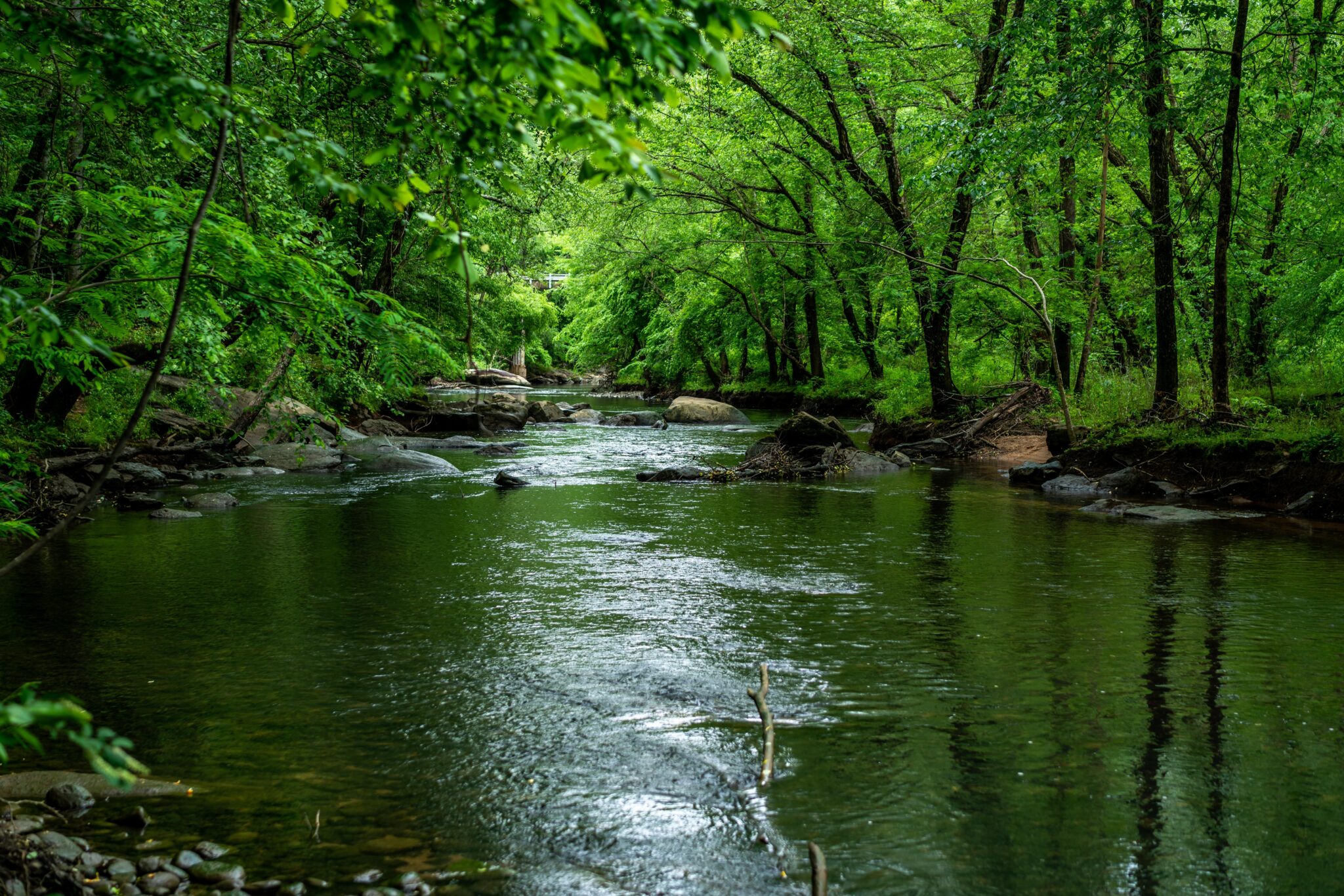Coastwatch Looks at Lessons Learned from Hurricane Matthew Five Years Later

The new issue of North Carolina Sea Grant’s award-winning Coastwatch magazine features an in-depth look at lessons learned from Hurricane Matthew, as well stories on the Gullah/Geechee Nation, student podcasts, humpback whales, fishing at wind farms, and much more.
Corey Davis from the North Carolina State Climate Office says torrential inland flooding from Hurricane Matthew in 2016 was a wakeup call, sparking state investment in coordinated resilience efforts. In this issue, he provides readers with five key takeaways from the storm.

“We teach our children the same traditional ways to go out in the water, and the same traditional ways to live from the land: only when things are in season,” says Queen Quet, leader of the Gullah/Geechee Nation. In “Conserving a Culture,” Lauren D. Pharr, a Global Change fellow with the Southeast Climate Adaptation Science Center, explores if and how Gullah/Geechee heritage can survive the forces of climate change and land development.
In “Podcasting a Wide Net,” science communicator Lee Cannon interviews student journalists at the North Carolina coast who are taking community voices on climate change to a global audience. She tells how this Community Collaborative Research Grant project has inspired North Carolina high schoolers to explore new careers.
Six new videos highlight beautiful — and ecofriendly — North Carolina plants, and in this issue the award-winning Julie Leibach introduces the “Native Plant Picks” series from the Coastal Landscapes Initiative.
This issue also brings the latest science to readers, answering these questions (among many others):
- How do humpback whales behave around busy Atlantic seaports?
- What’s the status of American eels in North Carolina’s tidal creeks?
- What do anglers think about fishing around wind farms?
The Winter 2021 edition of Coastwatch also offers four new seasonal recipes from our long-running Mariner’s Menu.
This issue is the last of the calendar year for North Carolina Sea Grant’s flagship publication, during which time the magazine received seven new state and national honors. For the third year in a row, the NC Association of Government Information Officers named Coastwatch the state’s best print publication. For the fourth year running, NCAGIO recognized a new Coastwatch story as the state’s best feature, this time for “Plan, Respond, Recover, Adapt” by North Carolina Sea Grant coastal resilience specialist Sarah Spiegler.
###
Coastwatch online: ncCoastwatch.org
In print: go.ncsu.edu/Subscribe-Now. New subscriptions will start with the Spring 2022 issue.
Permissions: Some content that appears in Coastwatch is available to republish. Email dmshaw@ncsu.edu.
lead photo: Hurricane Matthew increased the water flow in wetlands, flooding roadways and farmlands in Robeson County, 2016. Credit: USDA/Lance Cheung.
- Categories:


